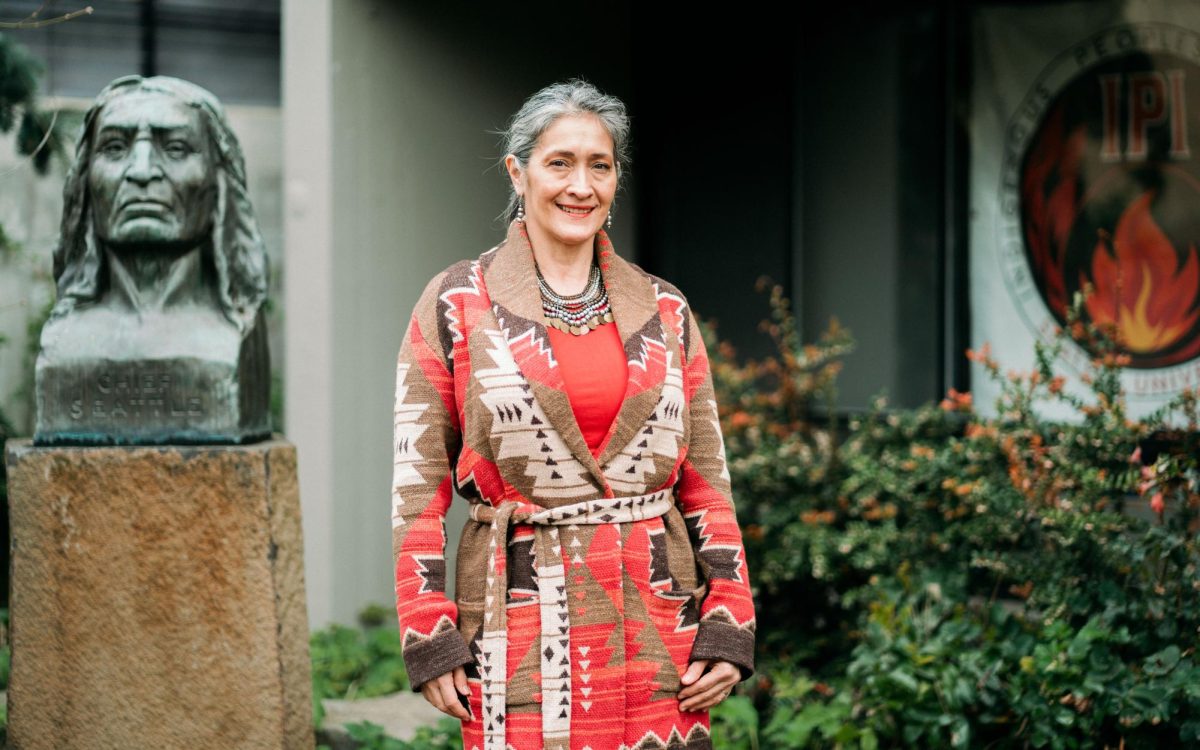MACKLEMORE’S APOLOGY ACCEPTED
Macklemore is known for using his status as a Grammy award-winning artist as a platform to speak out against bigotry and intolerance. Thus it came as something of a surprise when the rapper chose to wear an apparently anti-Semitic costume at a show at Seattle’s EMP Museum on May 16.
Since the incident, Macklemore has apologized and the Anti-Defamation League, an organization that aims to stop the defamation of the Jewish people, and secure justice and fair treatment to all people, has formally accepted his apology.
“I respect all cultures and all people,” said Macklemore. “I would never intentionally put down anybody for the fabric that makes them who they are. I love human beings, love originality, and … happen to love a weird outfit from time to time.”
While the some folks remain offended by the pop-star’s choice of “weird outfit,” his apology has been widely accepted.
NAKED MAN HOSPITALIZED AFTER FLEEING FROM POLICE
A naked man was hospitalized Tuesday after he reportedly fled police and jumped into Elliot Bay.
“He ran from officers near Seattle’s waterfront and then jumped into the Bay,” according to KOMO News.
Officials say the incident occurred after police received several calls concerning a naked man “running in Downtown Seattle near 5th and Cherry late Tuesday morning.” Police then encountered the man around Alaskan Way and Columbian Street and attempted to apprehend him, actually managing to get one of his hands in cuffs. However, the man was able to break free and proceeded to run four clocks to Coleman Dock.
Video footage submitted by an eye-witness to KOMO then shows the naked man climbing down a ladder at a ferry-terminal dock and dropping into Elliot Bay below.
SPD reports that the man was taken from the water and taken to a hospital for evaluation.
WASHINGTON STATE FISH FRENZY
Washington State residents eat more fish than any other group of people in the nation. According to the Seattle Times, the state, particularly the Washington State Department of Ecology, is currently revisiting its fish consumption rate. The figure, not exactly a part of the public dialogue, dictates the amount of fish that must be kept happy and healthy in Washington’s waterways to feed a fish-frantic population. The quantification may seem abstract, but the implications of any number set are huge as it is filtered through various levels of policy. An increase in the fish consumption rate mandates higher standards of care that fisherman and corporations must adhere to in order to ensure that fish-bearing waterways in the area remain clean and healthy. The State of Oregon currently maintains the highest fish consumption rate in the country – 175 grams per day. Internal discussions within Washington’s Department of Ecology are ongoing, but according to the Seattle Times the group is considering a rate between 125 and 225 grams per day.
Environmental activists, among various other groups concerned for Washington’s waterways, aren’t universally lauding the Department of Ecology this week. Despite their apparent efforts to clean waterways with a higher fish consumption rate, there are also reports that the Department is considering revising some of their rules that would allow for waterways to contain a much higher amount of cancer-causing materials, a proposal long advocated by area business groups.
BILL GATES TO CURB PERSONAL GIVING
Bill Gates, Seattle’s most famous resident and (depending on the week and the state of the U.S. stock market) the richest man in the world, is also the founder and namesake of the world’s largest charitable foundation, the Bill and Melinda Gates Foundation. Gates has given billions of dollars of his own personal wealth to the foundation over the last few decades. According to the Seattle Times, however, it appears as though Gates’ giving to his foundation may lessen significantly in years to come. The problem however, isn’t that his wealth is flagging (Forbes estimates that Gates’ net worth is currently the world’s highest at $76 billion, having increased $9 billion in the last year alone). Rather, it appears as though Gates’ giving must decline because the foundation is currently struggling spend the incoming money fast enough to maintain its tax-exempt status. The most substantial giver to the Gates Foundation, which maintains its headquarters in Seattle, is not Bill Gates, but Warren Buffett, the world’s second richest man. The aging Buffett’s pledged years ago to give the vast majority of his wealth to the foundation, and has already begun making multi-billion dollar injections into the foundation. The Seattle Times indicates that the foundation was able to pay out $3.9 billion last year, but as more and more capital is pushed into their coffers they are finding it more and more difficult to spend the minimum percentage of their assets mandated by the IRS. As Buffett continues his giving (and has he approaches death, at which point the foundation will be flooded with funds) Gates has reportedly determined it most prudent that he curbs his own giving for the time being in consideration for the foundation’s future. Billionaires have bizarre problems.
UW STUDENTS RESTORE YESLER SWAMP
University of Washington students are working to restore Yesler Swamp—a small swamp near the UW Center for Urban Horticulture and the second largest swamp on Lake Washington—to its natural state. For UW students, it’s worth the trouble. Eventually, the space will be a western red-cedar swamp, reintroducing the environment that existed around the lake over 150 years ago.
“It’s quite an unusual place,” said UW professor of environmental and forest sciences, Kern Ewing in a Seattle Times article. Ewing and UW’s Restoration Ecology Network are volunteering throughout the region to foster conservation efforts and restoration, with this project representing just one facet of their work.
With the plant restoration, Washington Conservation Corps began construction of a 1,200-foot boardwalk that will run over the area, allowing visitors to get a closer look at the lagoon, wildlife and plant species. So far, the Restoration Ecology Network has planted many native plants in the area while simultaneously working to eradicate nonnative invasive species such as blackberries and reed canary grass.
Students told the Seattle Times that the area is good for seeing interesting plants and animals.
“Hopefully, with restoration, there will be more food for them,” said one UW student Cameron Newell of the wildlife. But, wildlife have not always responded positively to their presence. Bald eagles and hummingbirds have been known to pester workers and protest the intrusion.
Additionally, beavers in the lake have been attempting to reach the plants, but are kept at bay by fences from the project. Over 100 regions in the area have received restoration help from the UW students.
The work is needed after the area’s history of dealing with massive land and industrial changes. From population growth to the sawmill production along Seattle’s waterways, the area has been the brunt of consistent human contact.
UW purchased the land after the sawmill burned down for the second time in the 1920s and during World War II the area became a garden food source for locals throughout wartime.
The students working on the project are mostly studying within the field of restoration ecological, and the experience is invaluable, Ewing said.
“Every one of our graduates gets a job,” he said.
Community members are glad for the restoration—hopefully, once everything settles down, the hummingbirds and eagles will be too.










